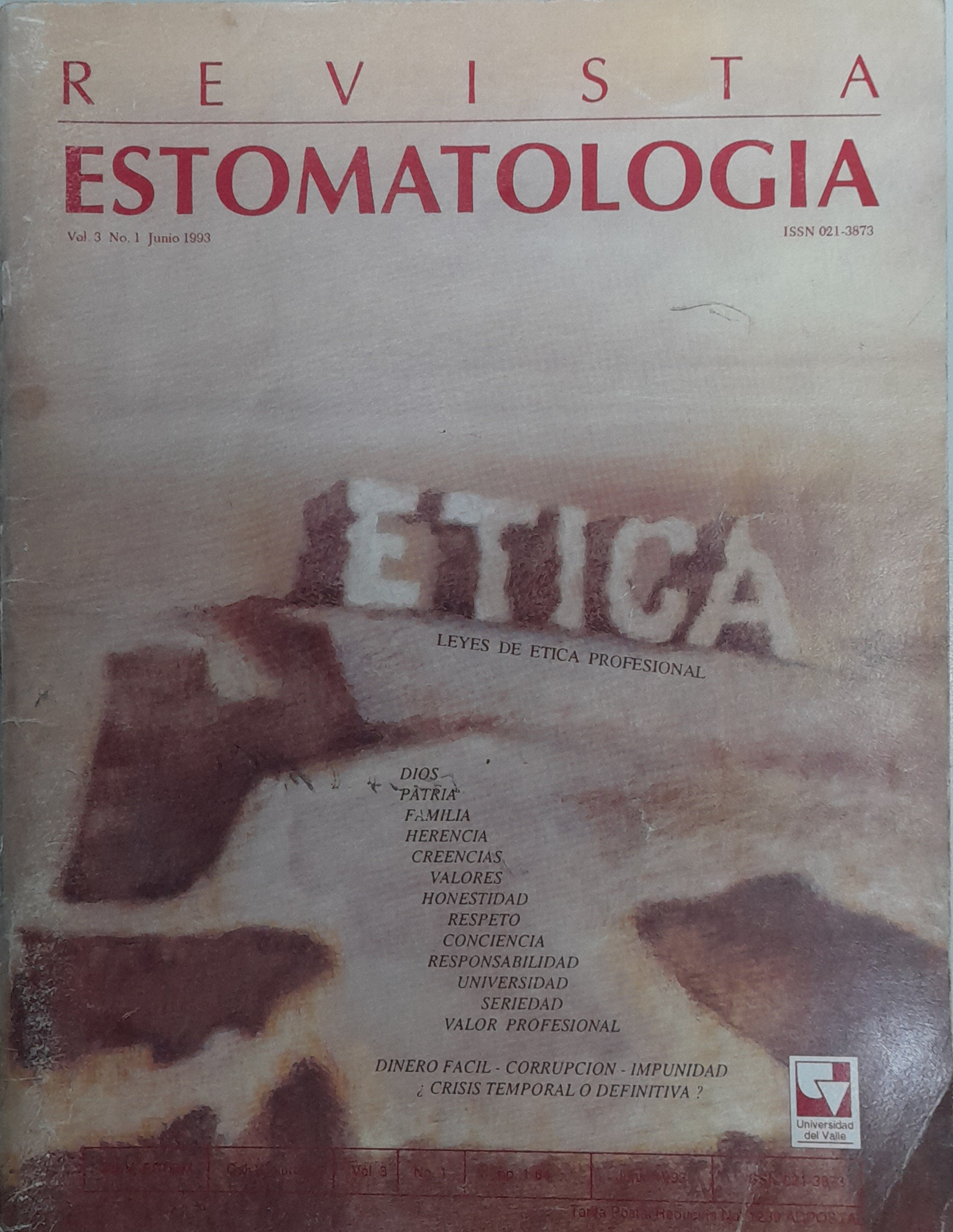Diagnóstico preliminar de esterilización en 60 consultorios odontológicos de Cali
Main Article Content
Many studies indicate that dentists, dental assistants and patients are at high risk in contracting comunicable infections because they are exposed to blood, saliva, crevicular fluid and debris or aerosol particles that can have pathogens such as bacteria, viruses and fungi. To prevent infections, dental workers must wear gloves, gowns, masks and take protective against splashes, spray or droplets as they are liable to be contaminated with pathogens. Routine safeguard techniques to control infections: e.g.: disinfection and sterilization must not be neglected. In this stlldy, sixty dentist were interviewed on these topics, focused on techniques of sterilization and disinfection, useof protective barriers and disposal waste material. The results showed that a wide variety of procedures in common use were unacceptable owoing to risk of crossinfections. More educational efforts must be directed at helping the dentists increase their scientific knowledge of different kinds of infective agents emphasizing mechanical-technical issues for protective techniques in infection control.
- Judy Villavicencio, Adolfo Contreras, Jesus Hernández Silva, Freddy Moreno, Half Century of creation and progress at the Dental School - Universidad del Valle, Cali - Colombia: relevant achievements in the last decade , Revista Estomatología: Vol. 27 No. 2 (2019)
- Juan Diego García Castaño, Mario Julián Gómez Palacios, Juan Pablo Rosales Mora, Adolfo Contreras, Microbiología en pericoronitis aguda de terceros molares mandibulares , Revista Estomatología: Vol. 11 No. 2 (2003)
- Adolfo Contreras, Roger Mauricio Arce, Javier Enrique Botero, Adriana Jaramillo, Contaminación bacteriana de cepillos dentales en niños y sus padres: una cuestión de educación , Revista Estomatología: Vol. 10 No. 2 (2002)
- Adolfo Contreras, Adriana Jaramillo, Freddy Moreno, Carlos Valencia, First meeting of the research groups of School of Dentistry at the Universidad del Valle “Constructing research strategies.” Opinion article , Revista Estomatología: Vol. 19 No. 2 (2011)
- Adolfo Contreras R., Miryam Astudillo, Graciela Barona, Fabio Carmona, Aristides Baraya, Efecto inhibitorio del triclosán al 0.2% y citrato de zinc al 0.02% sobre bacterias cariogénicas y periodontopatogénicas (in vitro) , Revista Estomatología: Vol. 6 No. 1 (1996)
- Paola Andrea Gaviria , Heidy Liliana Rosales, Adolfo Contreras, Contaminación in vitro de cepillos dentales , Revista Estomatología: Vol. 9 No. 2 (2001)
- Jorge-Enrique Soto-Franco, Heberth-Fernando Aldana, Juan-Manuel Navia, Melissa Peláez, Jorge Quisoboni, María-Alexandra O'Meara, Adolfo Contreras, High sensitive- C reactive protein, periodontal parameters and periodontal microbiota after scaling-root planning plus Azithromycin as treatment of Chronic Periodontitis: A Randomized Clinical Trial , Revista Estomatología: Vol. 24 No. 2 (2016)
- Lina María Villegas, Judy Elena Villavicencio, Adolfo Contreras, Dietary intake and early childhood caries , Revista Estomatología: Vol. 26 No. 2 (2018)
- Sandra Amaya, Maria F. Bolaños, Adriana Jaramillo, Jorge E. Soto, Adolfo Contreras, Estado periodontal y microbiota subgingival en mujeres preeclámpticas , Revista Estomatología: Vol. 12 No. 2 (2004)
- Eliana Cadena, Jessica Delgado, Diana Peña, Paola Sánchez, Sonia Gutiérrez, Adolfo Contreras, Adriana Jaramillo, Anilza Bonelo Contreras, Effectiveness of antibacterial dental brushes. In vitro study , Revista Estomatología: Vol. 22 No. 1 (2014)

This work is licensed under a Creative Commons Attribution-NonCommercial-NoDerivatives 4.0 International License.
Los autores/as conservan los derechos de autor y ceden a la revista el derecho de la primera publicación, con el trabajo registrado con la licencia de atribución de Creative Commons, que permite a terceros utilizar lo publicado siempre que mencionen la autoría del trabajo y a la primera publicación en esta revista.





